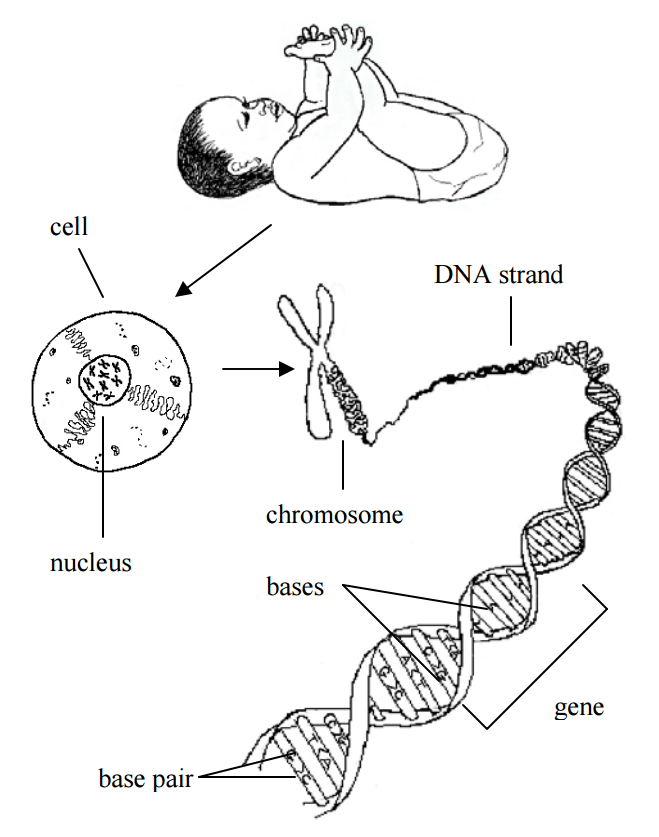Genetic conditions
Article Translations: (Spanish) (Hmong) (Somali)
What is a genetic condition?
A genetic condition is a disorder that is caused by a change in a gene. There are thousands of genetic conditions, and new ones are being discovered all the time.
Our bodies are made up of billions of cells. Inside each cell is a set of genes. Genes are the body's "instructions." Our bodies read the genes and use the instructions to make the proteins that compose who we are. For example, there are genes for things like eye color and height.
Genes are inherited (passed on to you by your parents). That is why you look similar to your parent

Definitions
Bases: nucleic acids or chemicals in DNA. The names of the chemicals are adenine (A), cytosine (C), guanine (G), and thymine (T).
Base pairs: bases that are across from each other in the DNA strand. A is always paired with T, and C is always paired with G.
Cells: building blocks of the body.
Chromosomes: packages of long strands of DNA. Chromosomes are found in pairs in the cell's nucleus. Humans have 23 pairs of chromosomes.
DNA (deoxyribonucleic acid): spiral- shaped strands of chemicals that make up a chromosome.
Genes: section of the DNA strand. One gene is a string of many bases.
Nucleus: the part of the cell that contains the DNA.
How are genes passed on from our parents?
There are two copies of almost every gene in your body. When people have a child, they pass on one copy of every gene in their body. The baby has one full set of genes from the mother and one full set of genes from the father.
Do genetic conditions always come from a parent?
Not always. Genetic conditions are caused by a change in a gene or genes. Sometimes that change is inherited from a parent. Sometimes, a mutation (change) can happen in a gene. New mutations happen all the time in our bodies. Often these changes are minor and don't cause a problem because:
- they may not change the meaning of the instruction.
- the body may only need one working copy of the instruction to do the job.
Sometimes, a serious change happens in a gene and the instruction no longer makes sense to the body. When that happens, the instruction can no longer be done correctly and it can lead to problems.
If a serious change happens to a gene in a sperm cell (father's sex cell) or egg cell (mother's sex cell), it can be passed on to a child. When that happens, the parent does not have the genetic condition but the child does.
Nothing can be done to cause or to prevent a change in a gene. Usually there is no way for parents to know that a change has happened until their child begins to have symptoms of a condition.
Is there a test for gene changes?
Genetic testing can be done, but only for certain genetic conditions. The test is usually done on a blood sample at a special laboratory. Genetic testing can be used to confirm a diagnosis. However, even if the test does not find a change, the person may still have the genetic condition. Ask your doctor or genetic counselor to find out how accurate a specific genetic test is.
Questions?
This sheet is not specific to your child, but provides general information. If you have any questions, please call your clinic.
Last Reviewed 7/2021 © Copyright
This page is not specific to your child, but provides general information on the topic above. If you have any questions, please call your clinic. For more reading material about this and other health topics, please call or visit Children's Minnesota Family Resource Center library, or visit www.childrensmn.org/educationmaterials.
© 2024 Children's Minnesota
